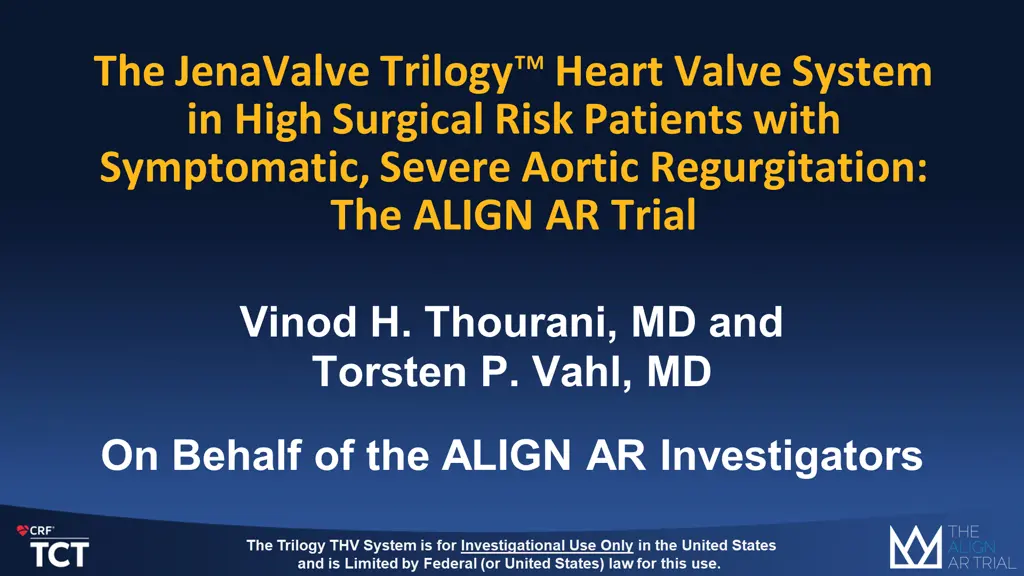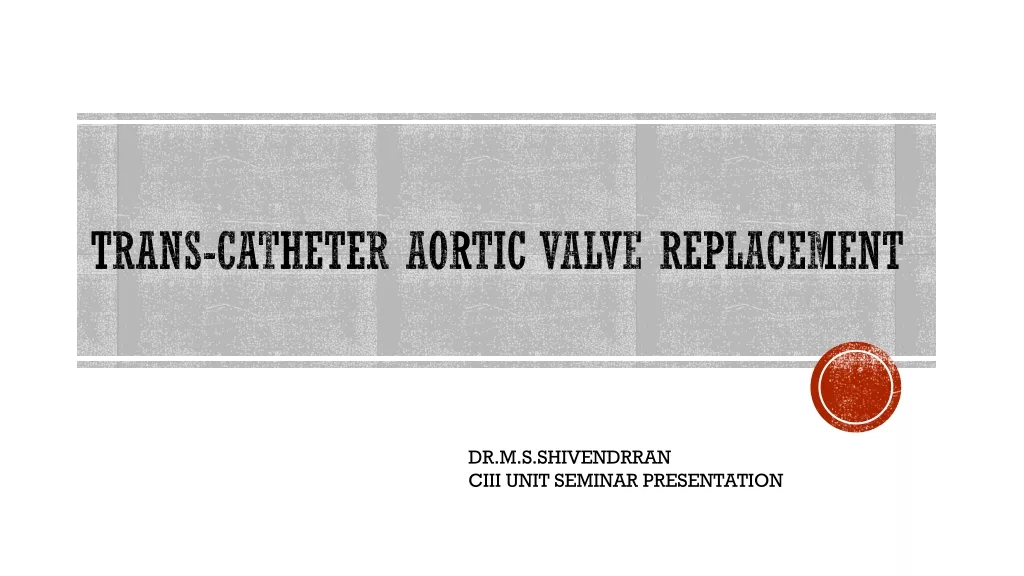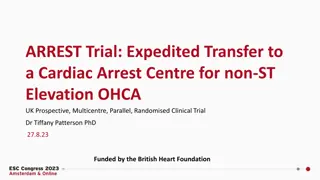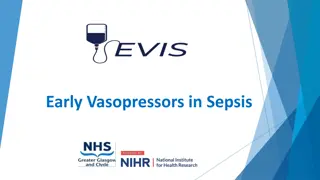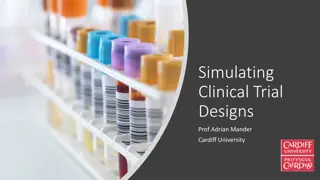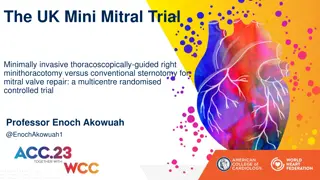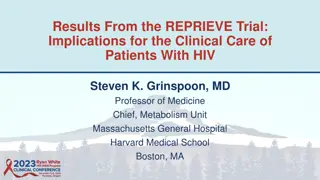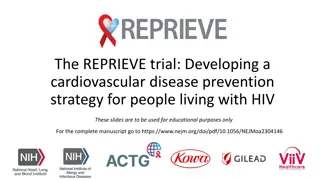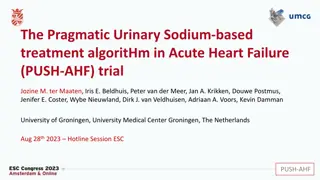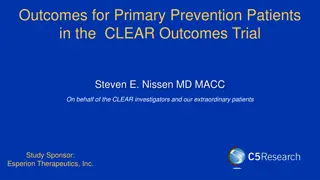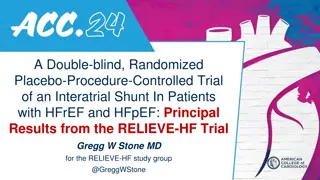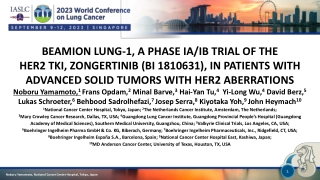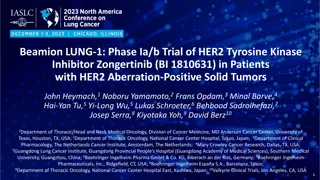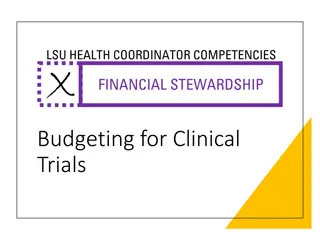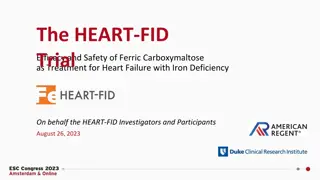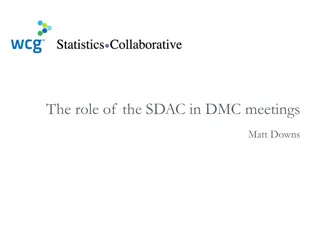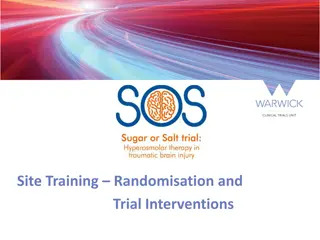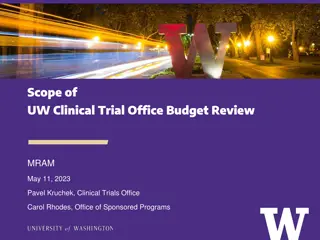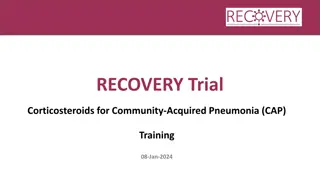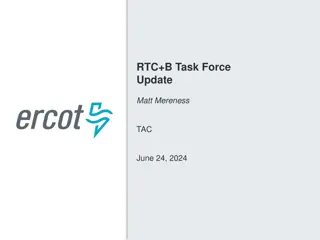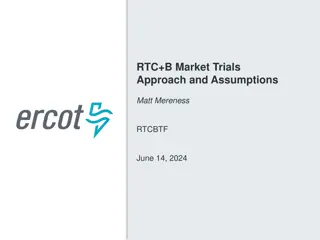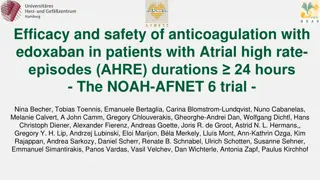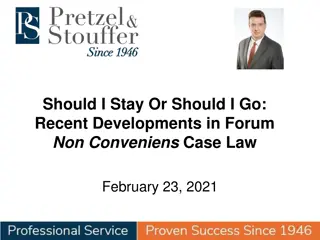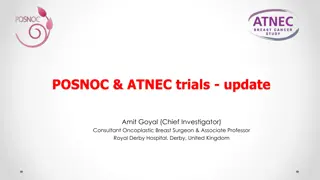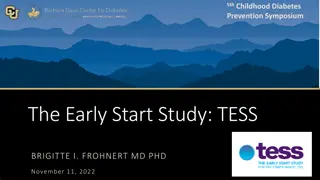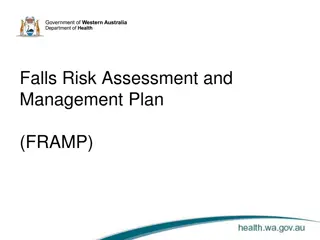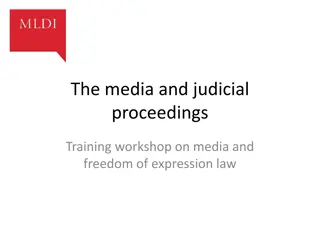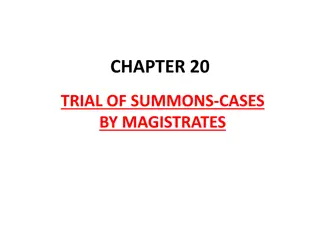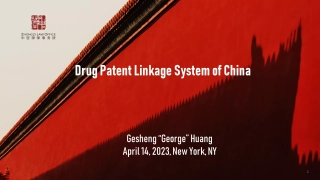ALIGN.AR Trial: JenaValve Trilogy for Aortic Regurgitation
The ALIGN.AR trial evaluates Trilogy THV system in high-risk patients with severe aortic regurgitation. Untreated AR is linked to high mortality, emphasizing the need for safe alternative interventions like TAVR devices. The study aims to demonstrate safety and effectiveness of the Trilogy valve in patients with symptomatic AR to offer a promising option.
Download Presentation

Please find below an Image/Link to download the presentation.
The content on the website is provided AS IS for your information and personal use only. It may not be sold, licensed, or shared on other websites without obtaining consent from the author. Download presentation by click this link. If you encounter any issues during the download, it is possible that the publisher has removed the file from their server.
E N D
Presentation Transcript
The JenaValve Trilogy Heart Valve System in High Surgical Risk Patients with Symptomatic, Severe Aortic Regurgitation: The ALIGN AR Trial Vinod H. Thourani, MD and Torsten P. Vahl, MD On Behalf of the ALIGN AR Investigators The Trilogy THV System is for Investigational Use Only in the United States and is Limited by Federal (or United States) law for this use.
Disclosure of Relevant Financial Relationships Within the prior 24 months, I have had a relevant financial relationship(s) with the company(ies) listed below. Nature of Financial Relationship Grant/Research Support Company Abbott Vascular, Artivion, Atricure, Boston Scientific, Croivalve, Edwards Lifesciences, Jenavalve, Medtronic, Trisol Abbott Vascular, Artivion, Atricure, Boston Scientific, Croivalve, Edwards Lifesciences Dasi Simulations Consultant Fees/Honoraria Executive Role/Ownership Interest All Relevant Financial Relationships have been mitigated. Faculty disclosure information can be found on the app
Background Untreated severe, symptomatic AR is associated with high mortality especially in those with NYHA III/IV symptoms SAVR remains the only recommended intervention for patients with native severe AR Few treatment options for high surgical risk patients Off-label use of TAVR devices for AR is associated with high rates of complications >70% mortality at 5 years Dujardin K, et al. Circulation. 1999;99:1851-1857. Otto CM, et al. Circulation. 2021;143:e72-e227. Thourani VH, et al. Structural Heart. 2021;5:608-618. Haddad A et al., Clinical Cardiology 2019;42:159-166.
Purpose Demonstrate the safety and effectiveness of the Trilogy Transcatheter Heart Valve amongst a group of patients with symptomatic 3+ aortic regurgitation who are high-risk for surgical aortic valve replacement
ALIGN AR Study Design Multicenter, Non-blinded, Single Arm Evaluation of Patients with Symptomatic 3+ Aortic Regurgitation at High Risk for SAVR Trilogy THV Implantation Clinical Evaluation, Echocardiography, Functional and QoL Assessment at 30 Days, 6 Months, 1 Year and Annually up to 5 Years 30 Day Primary Safety Endpoint 1 Year Primary Efficacy Endpoint Comparison with Prespecified Performance Goal
Trilogy THV System for Aortic Regurgitation 27-31 French Open Cell Porcine Pericardial Tissue Available in 3 sizes with a perimeter range from 66-90mm Nitinol Frame Locator Flared Sealing Skirt Controller (Advance and Rotate Valve) Preshaped Sheath Catheter Deflector
Trilogy THV in AR Anatomy 27-31F opening Alignment Positioning/Anchoring Deployment Aligns THV with native cusps Large open cells provide access to low coronaries Locators clip onto native leaflets forming a natural seal and stable securement Flared sealing ring conforms to annulus
Study Organization Investigator Institution Study Chair Martin Leon, MD Columbia University Medical Center Vinod Thourani, MD Piedmont Heart Institute National Principal Investigators Torsten Vahl, MD Columbia University Medical Center Martin Leon, MD Columbia University Medical Center Raj Makkar, MD Cedars Sinai Medical Center Vinod Thourani, MD Piedmont Heart Institute Executive Steering Committee Torsten Vahl, MD Columbia University Medical Center Stephan Baldus, MD Heart Center K ln Hendrik Treede, MD University Heart and Vascular Center Mainz CT Core Laboratory Omar Khalique, MD Cardiovascular Research Foundation Echocardiography Core Laboratory Nadira Hamid, MD Cardiovascular Research Foundation DSMB/CEC Chairperson W. Douglas Weaver, MD Henry Ford Health System
PIs of Top 5 Enrolling Sites Raj Makkar, MD Susheel Kodali, MD Jamie McCabe, MD David Daniels, MD Lowell Satler, MD Cedars-Sinai Medical Center Columbia University Medical Center/NYP University of Washington California Pacific Medical Center Washington Hospital Center 43 Patients 33 Patients 13 Patients 13 Patients 10 Patients 180 patients were enrolled at 20 sites in the ALIGN-AR Trial
Key Inclusion and Exclusion Criteria Inclusion Adult patients with moderate to severe or severe (Grade 3) AR assessed according to ASE criteria NYHA Class II or greater symptoms High-risk for SAVR defined by the Heart Team Exclusion Congenital unicuspid or bicuspid aortic valve Aortic root diameter >5.0 cm Previous prosthetic aortic valve Mitral regurgitation >moderate CAD requiring revascularization
Primary Endpoints The primary safety endpoint was a composite at 30 days based on VARC-2 definitions All-cause mortality, any stroke, major vascular complication, life threatening or major bleeding, new pacemaker, acute kidney injury, valve dysfunction and surgery or intervention related to the device The primary efficacy endpoint was all-cause mortality at 12 months
Key Secondary Endpoints Cardiovascular mortality Disabling stroke Hemodynamic valve performance LV remodeling measured by echocardiography NYHA Functional Class Quality of life measured by the KCCQ instrument
Primary Safety Endpoint: Performance Goal Derivation Performance Goal derived from contemporary high-risk AS TAVR trials reporting VARC-2 composite endpoints* (REPRISE III, PORTICO IDE, SOLVE TAVR, n=1108) Weighted Safety Composite Endpoint = 30.0% Performance Goal Margin = 1.35 Performance Goal for 30-Day Composite Safety Endpoint = 40.5% Performance Goal for 30-Day Composite Safety Endpoint = 40.5% *Only the FDA or CE approved device cohorts were included in weighted composite endpoint derivation (investigational device cohorts excluded)
Primary Efficacy Endpoint: Performance Goal Derivation Performance Goal for efficacy derived as a weighted average of 1-year mortality with conservative management according to NYHA Class Class I/II Class III/IV Weighted Average + = 19.1% x 30% 34.7% x 70% 30.0% Literature for conservative treatment of ssAR is limited, so weighted average reduced from 30% by 5% Performance Goal for 1-Year Primary Efficacy Endpoint = 25.0% Turk et al. Ann Thorac Surg. 2010;89:731-7. Sampat et al. J Am Coll Cardiol.2009;54:452-7. Fiedler et al. Heart. 2018;104:835-40. Kamath et al. Circulation.2009;120:S134-8.
Study Methodology The primary safety and efficacy endpoints are compared for noninferiority against the prespecified performance goals using the one tailed z-test with an = 0.025 Each patient reviewed (including imaging studies) and accepted by multi-disciplinary Heart Team AND unanimous vote of case review board Core lab review of all cardiac imaging 100% CEC adjudication of all major events using applicable VARC-2 definitions 5-year clinical and echocardiography follow-up planned in all patients
Screening and Patient Disposition (As Treated) Patients Screened (n=379) CT Anatomic Criteria (n=45) Moderate or Less AR (n=39) PatientsIneligible (n=199) Other Echocardiographic (n=8) Other Clinical and Anatomic Criteria (n=107) PatientsEnrolled(n=180) Trilogy THV Successfully Implanted (n=177) Converted to SAVR (n=1) Commercial TAVR implant (n=2) 30 Day Safety Population 180/180 (100%) 1 Year Efficacy Population 180/180 (100%)
Baseline Patient Characteristics Demographics and Co-Morbidities Vascular & Other Co-Morbidities Age (years) 75.5 10.8 Atrial Fibrillation 40.6% Female 47.2% Pulmonary Hypertension 25.6% BMI kg/m2 25.3 6.1 Prior Permanent Pacemaker 16.1% STS Score 4.1 3.4 Left Bundle Branch Block 5.6% NYHA Class III or IV 67.2% Right Bundle Branch Block 10.6% Hypertension 82.8% Prior CABG 11.1% Diabetes 14.5% Prior PCI 20.6% Renal Insufficiency 32.2% Prior CVA 10.6% Frailty 33.9% Carotid Disease 10.0% Prior Endocarditis 11.7% Peripheral Arterial Disease 17.8%
Baseline Patient Characteristics Demographics and Co-Morbidities Vascular & Other Co-Morbidities Age (years) 75.5 10.8 Atrial Fibrillation 40.6% Female 47.2% Pulmonary Hypertension 25.6% BMI kg/m2 25.3 6.1 Prior Permanent Pacemaker 16.1% STS Score 4.1 3.4 Left Bundle Branch Block 5.6% NYHA Class III or IV 67.2% Right Bundle Branch Block 10.6% Hypertension 82.8% Prior CABG 11.1% Diabetes 14.5% Prior PCI 20.6% Renal Insufficiency 32.2% Prior CVA 10.6% Frailty 33.9% Carotid Disease 10.0% Prior Endocarditis 11.7% Peripheral Arterial Disease 17.8%
ALIGN AR Patient Population 77 patients (42.7%) 80+ years with average STS 4.3% 36 patients (20.0%) 85+ years with average STS 4.6% 33.9% Classified as Frail 116 patients (64.4%) with 1+ Frailty measure (6MWT, Grip, Katz, BMI <20) 44 patients (24.4%) with 2+ Frailty measures 89 if include Hgb below threshold (49.4%)
Baseline Imaging Characteristics %(n) or mean SD mean SD Regurgitant Volume (ml) 55.5 17.2 AR Severity Severe Moderate to Severe Moderate Not Evaluable 64.4% (116) 31.7% (57) 2.8% (5) 1.1% (2) LVESD (mm) 39.6 10.2 LVESV (ml) 70.6 38.9 Vena Contracta Width 0.7 +/- 0.1 LVEF (% SD) 53.8 11.4 Prominent Holodiastolic Flow 46.7% (84) LV Mass Index (g/m2) 172.7 61.8 Mean Gradient (mmHg) 8.7 6.6 CT Annulus Perimeter (mm) 78.7 8.9 Regurgitant Fraction (%) 55.3 12.9 CT Annulus Area (mm2) 480.1 101.4
Procedural Details Variable % (n) 91.1%, (164) General Anesthesia 71.8 24.9 min Procedure Time 110.0 54.9 cc Contrast Volume 3.9% (7) Post-BAV Dilatation Trilogy Valve Implanted Large Medium Small 57.2% (103) 20.0% (36) 22.8% (41)
Procedural Outcomes Outcome % (n) In-procedural Death 0 Annular Rupture 0 Ventricular Perforation 0 Coronary Obstruction 0 Valve Embolization 2.2% (4) Aortic Dissection 0.6% (1) Femoral Access Site Intervention 2.2% (4) Success Technical Success Device Success Procedure Success 95.0% (171) 96.7% (174) 92.8% (167)
Primary Safety Endpoint at 30 Days Variable % (n) All Cause Mortality Cardiovascular Mortality Any Stroke Disabling Stroke Nondisabling Stroke Major/Life Threatening Bleeding Major Vascular Complication Acute Kidney Injury Stage 2 or 3 or Dialysis (7 Days) Surgery/Intervention Related to the Device New Pacemaker Implantation Pre-existing PPM 2.2% (4) 2.2% (4) 2.2% (4) 1.1% (2) 1.1% (2) 4.4% (8) 3.9% (7) 1.1% (2) 2.8% (5) 24.0% (36) 16.7% (30) 0.6% (1) 26.7% (48) Moderate Paravalvular Regurgitation Total
Primary Safety Endpoint at 30 Days* Enrolled Population N=180 40.5% prespecified non-inferiority margin Rate 26.7% Upper 1-sided 97.5% CI 34.1% 10% 25% 40% Pnon-inferiority < 0.0001 Non-inferiority criteria met for primary safety endpoint *Composite of 30 day all-cause mortality, all stroke, life-threatening/major bleeding, major vascular complications, AKI 2 or dialysis, valve intervention, new permanent pacemaker, moderate PVR
Primary Efficacy Endpoint at 1 Year* Enrolled Population N=180 25% prespecified non-inferiority margin Rate 7.8% Upper 1-sided 97.5% CI 12.3% 10% 20% 30% Pnon-inferiority < 0.0001 Non-inferiority criteria met for primary efficacy endpoint *All-cause mortality
New Pacemaker Implant Rate By Tercile of Enrollment 40% 30% 28% 30% 20% 14% 10% 0% Patients 1-60 Patients 61-120 Patients 121-180
Reasons for New PPM Rate Decrease New pacemaker implant rate exceeded 20% in the trial but varied according to year of enrollment Lower rates were observed at the end of the trial likely related to: Change in insertion technique placing locators above the nadir of native valve cusps Reduction in oversizing Evolution in management of periprocedural conduction abnormalities
Hemodynamic Valve Performance 10.0 3.0 2.9 Mean Gradient (mm Hg) 8.7 2.8 8.0 2.8 2.7 EOA (cm2) 2.7* 6.0 2.6 4.0 2.4 4.3 4.3 3.9 2.0 2.2 Baseline (n=180) 30 Days (n=172) 6 Months (n=154) 1 Year (n=141) 2 Mean Gradient (mmHg) EOA (cm ) *AVA (cm2)
Paravalvular Regurgitation 100% 0% 0.60% 0.60% 5.2% 7.8% 18.0% 80% 60% 93.5% 92.2% 80.8% 40% 20% 0% 30 Days (n=172) 6 Months (n=154) 1 Year (n=141) None/Trace Mild Moderate Severe
LV Remodeling LVESD LVESV 50 130.0 p<0.0001 p<0.0001 100.0 39.6 40 37.4 millimeters 34.7 milliliters 70.6 67.3 34.2 70.0 59.0 52.1 30 40.0 20 10.0 p-value for comparison of baseline to 1 year using paired t-test
LV Mass LV Mass Index LV Mass 475 250 p<0.0001 p<0.0001 400 200 172.7 323.7 117.5 219.5 325 grams/m2 133.8 grams 150 254.3 126.8 235.1 250 100 175 50 100 p-value for comparison of baseline to 1 year using paired t-test
NYHA Functional Class 100% 5% 7% 9% 10% 80% 32% 38% 37% 63% 60% 40% 60% 55% 54% 20% 32% 0% Baseline (n=180) 30 Days (n=170) 6 Months (n=152) 1 Year (n=151) Class I Class II Class III Class IV
Quality of Life: KCCQ-OS 100 p<0.0001 80 60 40 77.6 55.8 20 0 Baseline 1 Year
The ALIGN AR Trial Conclusions (1) In a population of symptomatic patients with 3+ aortic regurgitation at high surgical risk, TAVR using the Trilogy THV: Achieved safety outcomes that met the 30-day performance goal (26.7%, p<0.0001) Achieved an efficacy outcome for all-cause mortality that met the 12- month performance goal (7.8%, p<0.0001) Among safety endpoints, the rate of new pacemaker implantation was 24.0% and declined during the course of the trial due to changes in implant technique and oversizing strategy
The ALIGN AR Trial Conclusions (2) Trilogy THV performance was excellent with: Large EOA and low transvalvular gradients Low paravalvular regurgitation (0% Moderate at 1 year) Echocardiography demonstrated significant improvement in LV remodeling Patients reported sustained improvement in QoL and heart failure functional status through 1 year
The ALIGN AR Trial Clinical Implications The TRILOGY THV system provides the first dedicated TAVR option for symptomatic patients with 3+ AR who are at high risk for surgery and is well positioned to become the preferred therapy upon approval for this population The Trilogy THV System is for Investigational Use Only in the United States and is Limited by Federal (or United States) law for this use.
The ALIGN AR Trial The study chair, principal investigators, executive steering committee and sponsor express our deepest gratitude to all Trilogy investigators in the US, Germany, Netherlands, and New Zealand, their research coordinators, CRB/CEC/DSMB members and to the patients who have made substantial contributions to improve the care of patients with AR The Trilogy THV System is for Investigational Use Only in the United States and is Limited by Federal (or United States) law for this use.
